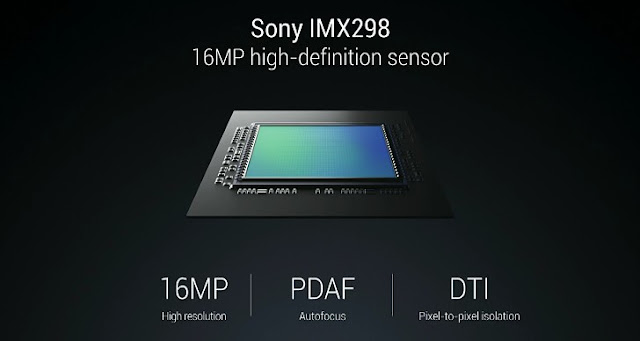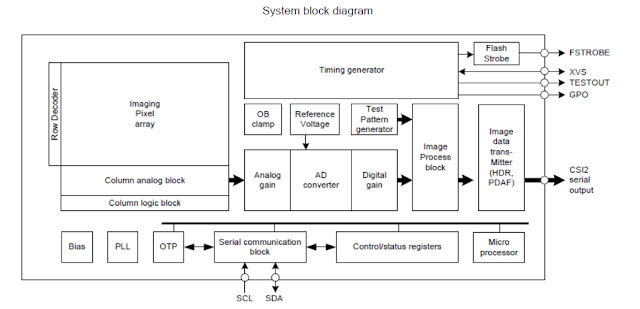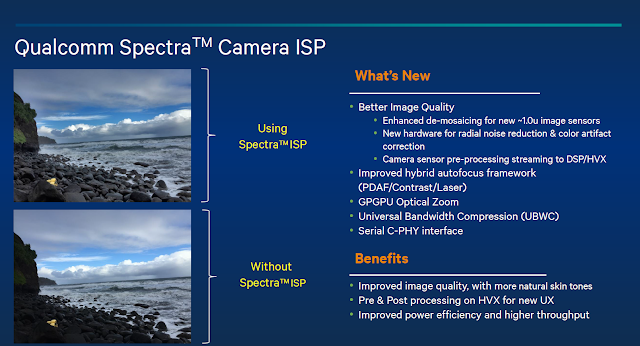To get things started, we look at the specifications of the camera. Xiaomi Mi 5 uses the Sony IMX298 sensor to capture photographs. It is a diagonal 6.521mm [Type 1/2.8 Sensor] 4608 x3456 16 Mega-pixel CMOS active pixel type stacked image sensor. It also adopts Sony Exmor RS technology to achieve high speed image capturing by column parallel analog-digital converter circuits processing to produce high sensitivity and low noise image.
In addition the lens of the camera unit also contributes to its success. However, there are no information on Xiaomi Mi 5’s lens make. Usually, competitors like Sony, will release full information about their lens type. For example, Sony Z and latest X series uses their own in-house G-Lens and Sensor.
An important feature of the Mi 5 camera is its 4-axis optical image stabilization (OIS). It aims to reduce camera shakes, thus improving night shot quality with a longer exposed shutter speed. The video below shows the optical image stabilization (OIS) technology as compare the iPhone 6S and iPhone 6S Plus.
Sony has introduced the new spatially multiplexed exposure technology, allowing more achievable high dynamic range still pictures and movie. This results in Xiaomi Mi 5’s capabilities to to capture images with rich detail and sharp focus.
The IMX298 image system block diagram is shown below:
The Snapdragon 820 will debut with the new 14-bit Qualcomm Spectra™ image signal processing (ISP) unit, designed to support superior DSLR-quality photography and enhanced computer vision.
The state of the art dual ISP design produces superior camera image quality and experiences. Qualcomm Spectra supports the latest 14-bit sensors for a wider range of colors and more natural skin tones. Users can also expect better photos through the hybrid autofocus framework and multi-sensor fusion algorithms that support next generation computational photography.
Qualcomm Spectra ISP is Qualcomm Technologies’ most advanced dual-imaging signal processing unit to-date, integrated and designed to provide best-in-class camera image quality and end-user benefits, including:
- Superior image quality, with more natural skin tones via advanced, 14-bit dual ISPs supporting up to 3 simultaneous cameras (e.g. one facing the user, and two rear facing), and up to 25 megapixels at 30 frames per-second with zero shutter lag;
- Improved photos with Qualcomm Spectra ISP’s flexible hybrid autofocus framework and multi-sensor fusion algorithms supporting next generation computational photography;
- Improved power efficiency when compared to previous generations, better noise immunity and higher throughput via advanced compression techniques and use of the latest MIPI serial C-PHY interface; and
- Next generation Computer Vision and other use cases via direct-to-DSP raw bayer data streaming and pre-processing capabilities.
Sony Sensor Technologies
Sony seems to reserve their best image sensors for their own branded smartphone.
Over the 4 generations of smratphones from the Sony Z1 to Z3+ Sony has equipped them with the IMX220 image sensors. The new Sony Xperia Z5 and Xperia X is upgraded to the new Sony IMX300 image sensor which was released on September 2015.
|
Sensor
|
Smartphone
|
Resolution
|
Megapixels
|
Sensor Size
|
|
Sony IMX220
|
Sony Xperia Z1 –Z4
|
5264 x 3960
|
20.7
|
1/2.3”
|
|
Sony IMX298
|
Xiaomi Mi5
|
4608 x 3456
|
16
|
1/2.8”
|
|
Sony IMX286
|
Huawei P9/ P9 PLUS
|
3968 x 2976
|
12
|
Unknown
|
|
Sony IMX300
|
Sony Z5 & X Series
|
5984 x 4140
|
25
|
1/2.3”
|
|
Sony IMX377
|
Google Nexus 6P
|
4032 x 3024
|
12.35
|
1/2.3”
|
|
Sony IMX260
|
Samsung S7
|
4032 x 3024
|
12
|
1/2.5”
|
|
Sony IMX – Unknown
|
Apple iPhone 6
|
3264 x 2448
|
8
|
1/3”
|
|
Sony IMX – Unknown
|
Apple iPhone 6s
|
4224 x 3024
|
12.19
|
1/2.9”
|
For the LATEST tech updates,
FOLLOW us on our Twitter
LIKE us on our FaceBook
SUBSCRIBE to us on our YouTube Channel!










